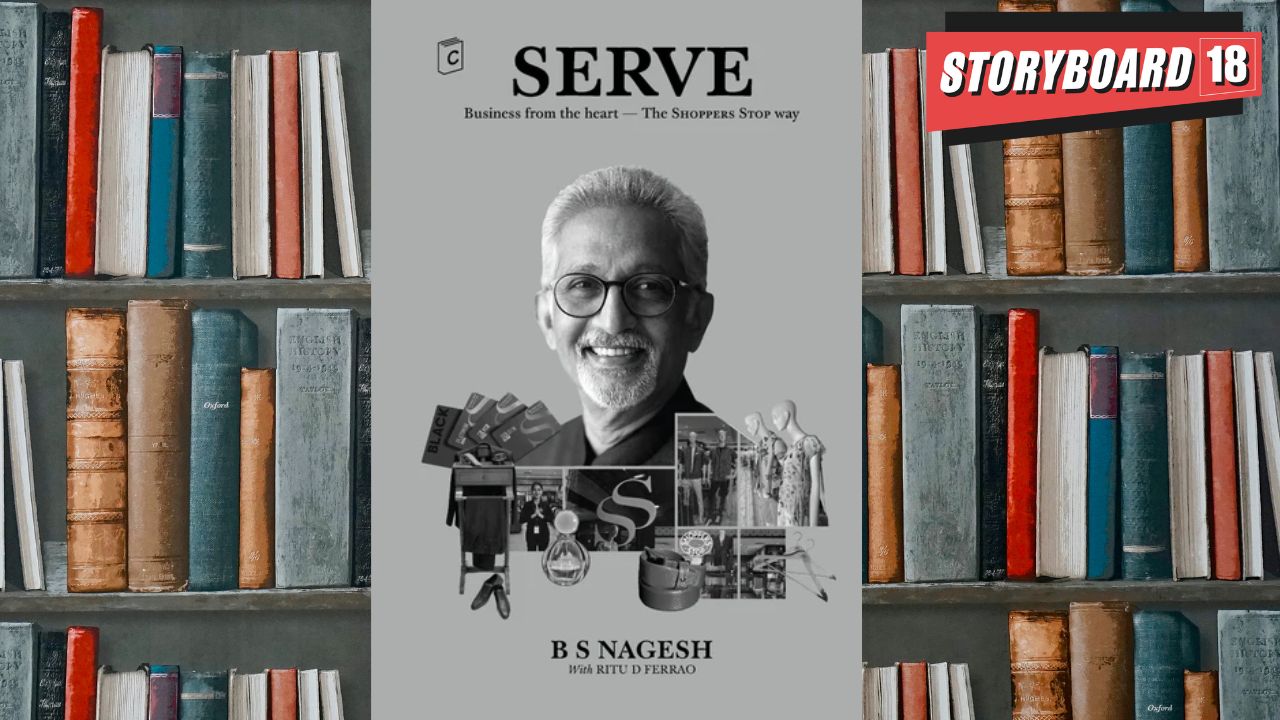BS Nagesh built Shoppers Stop and introduced India to modern retail. A new book titled “SERVE,’ with him on the cover, filled a gap that was long overdue. I opened SERVE with anticipation – is this a business book that takes you through the numbers? Is this a biography? Is this a retailers handbook?
“This is the journey of how Shoppers Stop was built. This is the story about building a brand by putting people first. This is a story about how the cultural grounding of every person at Shoppers Stop, shaped customer experience and how ‘work’ happened,” said Nagesh to me over the course of an interview. Written by Ritu D Ferrao over the period of 18 months, SERVE is structured into 20 chapters.
Here are our five #Bookstrapping insights.
1. Nagesh reminisces the time he was tasked with converting a rundown theatre into a department store in 90 days! A challenge that wasn’t logically possible, unless you were blinded by visionary zeal. “I was fortunate to be a professional who lived the life of an entrepreneur. From 1991 to 2005, most people thought that I was the owner of Shoppers stop. Such is the support I enjoyed from the Rahejas,” he smiles.
2. Systems were key. So dedicated payment days and making cheque collection easily stood out at a time when netbanking wasn’t the norm. Happy vendors became partners. Shoppers Stop also educated manufacturers to pack ‘lighter’ for self service retail. “This was tough but we actually knocked off packaging costs for our vendors and made life easier for employees! Partnership was always the goal. Marks and Spencers UK taught us what a ‘Milk Run’ was, further lowering costs. We asked all our vendors to pool in their products and deliver together to save costs,” says Nagesh.
3. The chapter titled ‘Firsts’ is interesting. “It wasn’t just in advertising that were we were first or bold. The idea of setting up 50000 sq feet retail shop was bold. The idea of buying a 12 crore ERP when our turnover wasn’t even 50 crore was bold,” says Nagesh. ‘Growth is a group activity’ highlights co-author Ritu in the book.
4. Culture is truly the biggest takeaway from the book. The first batch of management trainees had to clean toilets! The book says that they ‘had to do one week in housekeeping, one week in toilet cleaning, one week in security, one week guarding outside the store, one week in the storehouse, one week in the warehouse and thereafter they had to work in other functions within the business like accounting, administration, sale and merchandising.’ These experiences grounded each person and gave birth to several leaders who went on to become CEOs of retail companies in India.
5. There is a mention of the time in 1998 when Shoppers Stop decided to open a store in Hyderabad. Other retailers saw them as a threat and united against them. “We were able to demonstrate that in Mumbai and Bangalore, we hadn’t shrunk the sale of other retailers. In fact, we had expanded the market! One of the reasons was that we changed the way women went out to shop. Instead of stepping out in their nightwear, women started dressing well to shop,” adds Nagesh.
This is a book for those who want to understand the business principles behind the ‘cultural and process orientation’ that is needed to deliver exceptional customer service. “There is no specific sequence in which the book has to be read. Every chapter is like a story about our commitment to people as employees, people as customers and people as business owners,” sums up Nagesh.
Serve, volley, advantage all!
Reeta Ramamurthy Gupta is a columnist and bestselling biographer. She is credited with the internationally acclaimed Red Dot Experiment, a decadal six-nation study on how ‘culture impacts communication.’ Asia’s first reading coach, you can find her on Instagram @OfficialReetaGupta
Read More: Bookstrapping: A conversation with author Deepak Jayaraman of ‘Play to Potential’
